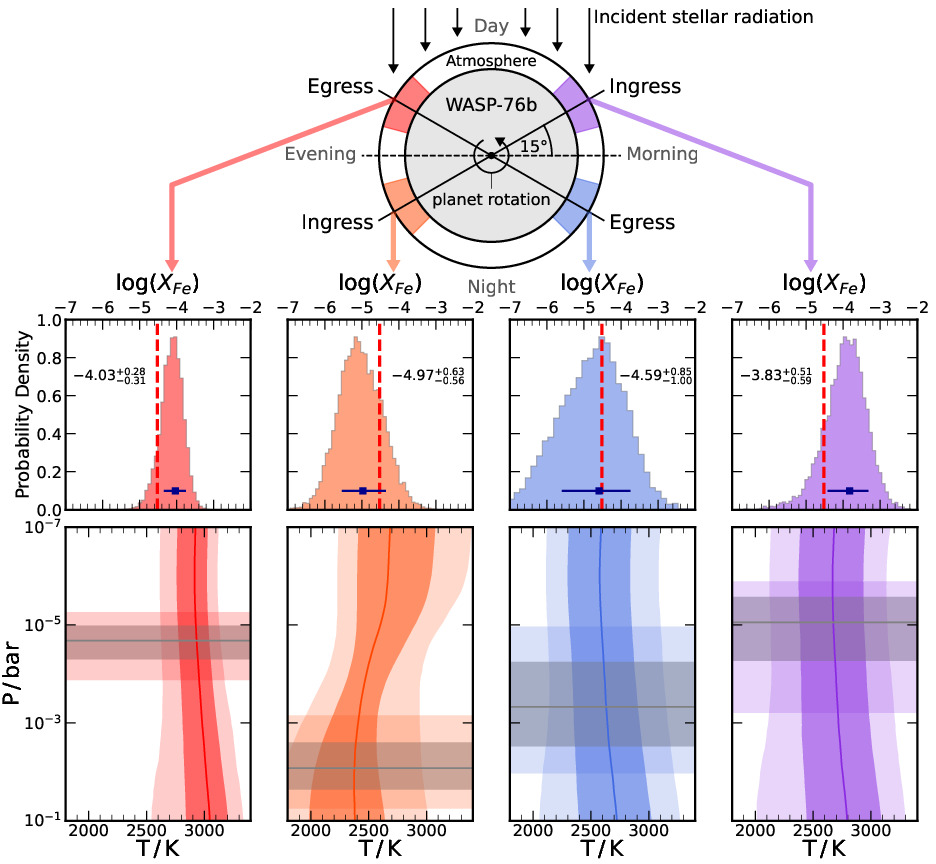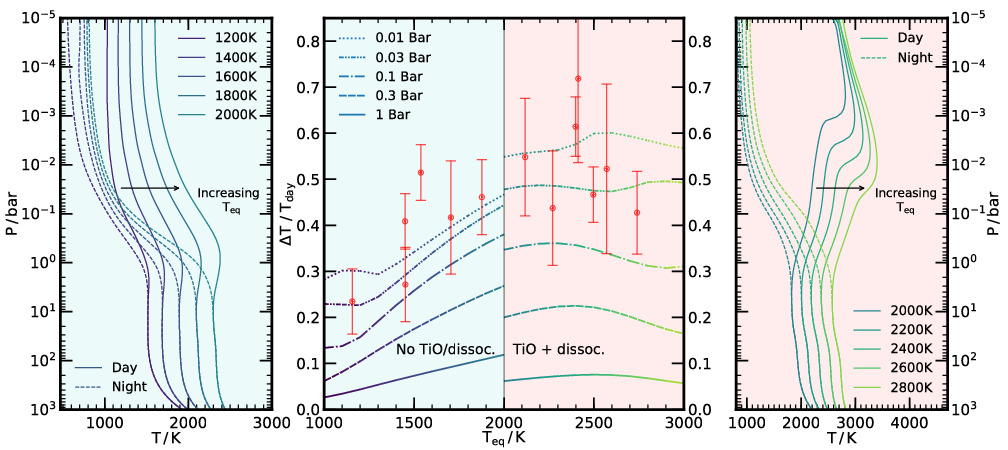Variation of temperature, Fe abundance and winds in an ultra-hot Jupiter
Exoplanet atmospheres are inherently three-dimensional systems in which thermal/chemical variation and winds can strongly influence spectra. Recently, the ultra-hot Jupiter WASP-76~b has shown evidence for condensation and asymmetric Fe absorption with time. I have developed a new model capable of exploring differences in these physical and chemical properties during the transit and between each side of the terminator. With this new model, HyDRA-2D, I have shown that Fe is most prominent on the evening side of the atmosphre towards the end of the transit. This part of the atmosphere also shows the highest temperature, and is one of the regions which is being irradiated by the star. On the other hand, the morning side shows a lower abundance and a weaker constraint. Previous works have indicated that this weaker signal may be due to Fe raining out of the atmosphere or due to clouds on this sde of the atmosphere obscuring the signal. Our retrieval approach shows a preference for the latter, but with a degeneracy allowing for both scenarios to fit the observations. We also constrain differences in wind speeds between the start and end of the transit, indicating that complex dynamical processes are occurring in the atmosphere. Such work shows great promise for robust constaints with current and future facilities, and my paper on this can be found here.

Coupled Day-Night Atmospheric Models of Exoplanets
Winds in exoplanetary atmospheres play an important role in transferring thermal energy from the day side to the night side of the planet. The thermal and chemical processes in the atmosphere are intricately linked with these circulation currents. I have developed a wind model for the day and night side of the atmosphere by incorporating a self-consistent wind flux which couples the two sides. The unique strength of this is its ability to model both sides self-consistently without great computational expense and provide a powerful intermediary between 1-D day side models and more complex 3-D general circulation models. I have used this model to explore the night side atmosphere of the ultra-hot Jupiter WASP-76b, and shown that the night side is cool enough for the condensation of Fe, consistent with observations. I have also modelled the atmosphere of the hot Jupiter WASP-43b and shown good agreement to both phase resolved observations and general circulation models. I have also used this to explore the day-night temperature contrast for a range of hot Jupiters with equilibrium temperatures between 1000-3000K. I have also compared these to observations of known systems and found good agreement. This project has been published in the Monthly Notices of the Royal Astronomical Society and can be found here.
